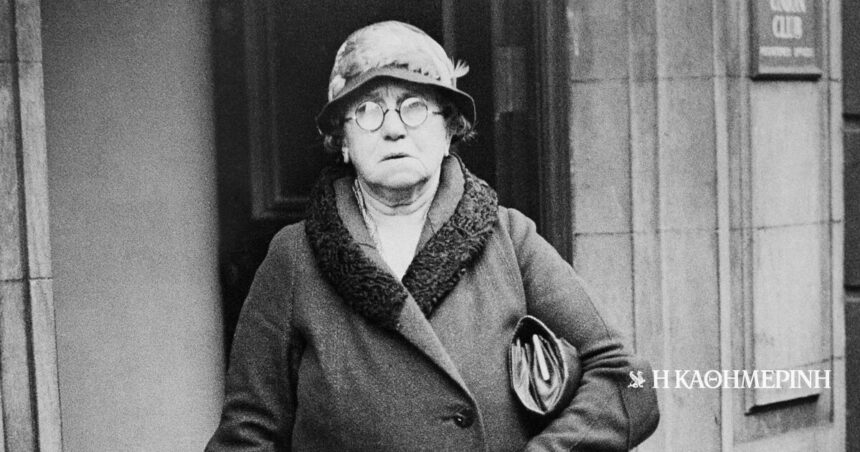OR Emma Goldman was born on June 27, 1869 in the Jewish quarter of Kovno, Lithuania. Tsarist anti-Semitism of Russia forced her family to migrate to Prussia and then St. Petersburg in search of social and economic stability. These experiences, combined with her discomfort with life and the role of women in the traditional Jewish family, led young Emma to immigrate to the USA at the age of 16.
Being a restless spirit and desiring to find answers to her messianic-type quests, she left the small town of Rochester, where she had lived with her husband until then, and settled in the Lower East Side of New York at the beginning of her second decade of life. Various cafés and lounges functioned there as evening meeting places, offering the opportunity for both informal education and lively discussion. Under his guidance Johan Mosteditor of the anarchist newspaper Die Freiheit (The Freedom), Emma quickly emerged as a charming speaker.
A defining moment for Goldman was in 1886, when four anarchists were sentenced to death by hanging on insufficient evidencebelieved to be responsible for the clashes in Haymarket Square in Chicago, in which 11 people were killed (seven were police officers). Convinced of the innocence of the hanged, she decided to delve into anarchism and soon became active in the anarchist movement.
He managed to deeply influence political activism in the US, giving hundreds of speeches across the country.
During the last decades of the 19th and early 20th centuries, however, there were strict federal laws in place against anarchists. At the same time, they were very often harassed by the authorities or even arrested. Nevertheless, he had already managed to deeply influence political activism in the US, with hundreds of speeches across the country. The magazine “Mother Earth”, which he founded in 1906 and circulated until 1917, was a publication in which many radical thinkers found a platform for expression. Among them were Roger Baldwin, who had heard Goldman speak about free speech in 1908 and founded the American Civil Liberties Union, as well as Margaret Sanger, a prominent contraceptive activist who considered Goldman her mentor.
Emma Goldman argued that World War I was nothing more than a conflict between imperialists that strengthened the position of capitalists at the expense of workers. So when the US entered the war in 1917, her activism was deemed a threat to national security, and she was arrested and spent 18 months in prison. After her release, in 1919, she was arrested again by order of J. Edgar Hoover, then director of intelligence for the US Department of Justice. Hoover convinced the courts to deny Goldman’s citizenship claims, making her deportable under the Alien Act of 1918, which allowed the deportation of any alien deemed anarchist. On December 21, 1919, Goldman, along with 248 other foreign-born deported to Soviet Russia as radical “aliens”.
Although initially excited by the opportunity to see Soviet Russia, she soon became disillusioned with the Bolshevik regime, just as she had been with the US decades earlier. The last two decades of her life were spent wandering around Europe and Canada, where she continued to give talks based on her ideas. She died in Toronto in May 1940, and her body was returned to Chicago, where she was buried near the anarchists who had first inspired her.
Column editor: Myrto Katsigera, Vassilis Minakakis, Antigoni-Despina Poimenidou, Athanasios Syroplakis




